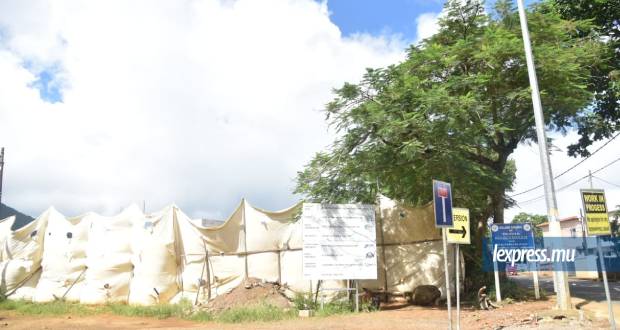Publicité
Re-engineering non-communicable diseases care - Diabetes: a health emergency
Par
Partager cet article
Re-engineering non-communicable diseases care - Diabetes: a health emergency


In Mauritius, from the Non-Communicable Diseases survey in 2015, we have 257,442 adults with diabetes, around 20-21% of the adult population. For every two persons who are known to have diabetes, there is one who is not diagnosed. Another 20% of the adult population have prediabetes, i.e. are at risk of developing diabetes, which can be present for up to 12 years before a diagnosis of diabetes. During this pre-diabetes phase (also known as impaired glucose tolerance), there is already an increased risk of heart disease and stroke. Of those who are already diagnosed with diabetes, around 33% have poor control and are at risk of significant complications.
The International Diabetes Federation Diabetes Atlas 2015 ranks Mauritius in terms of diabetes prevalence as the highest in Africa and the third highest in the world. Diabetes is the second leading cause of mortality in Mauritius. In 2016, 24.1% of deaths were due to Diabetes Mellitus.
Obesity is a known risk factor for diabetes and there are an estimated 398,417 people between 25 and 74 years of age who are overweight or obese in Mauritius. The main message from this brief overview is that diabetes is a health emergency in Mauritius, in terms of its existing and future impact on the health of Mauritians.
“The burden of diabetes and its complications on the Mauritian population and the economy are very high and will continue increasing”
Complications of diabetes
Diabetes is a major risk factor for kidney disease which eventually may lead to end-stage renal disease (ESRD) and the need for kidney dialysis. At the World Diabetes Day in November 2017, the Minister of Health stated that annually, 450 amputations are due to diabetes and around 1,500 persons with diabetes undergo dialysis. It is estimated that 30-40% of persons with diabetes will develop chronic renal disease, some of whom will need dialysis in due course. The social and economic implications of these figures are alarming: every week, around 10 adults in Mauritius have a leg amputated, with huge implications for the individual and the immediate family.
Renal dialysis, once started, continues for life unless a kidney transplant is successfully carried out. In Mauritius, despite new legislation in 2018, The Human Tissue (Removal, Preservation and Transplant) Bill, the supporting legal infrastructure and physical resources are not yet developed. Kidney transplants are uncommon and usually only from blood relatives. So, dialysis remains the only treatment for those with ESRD and is a long-term burden on the person affected and on health resources.
High costs of dialysis
Dialysis services are provided free to all patients in Mauritius. Approximately 1500 patients are presently undergoing dialysis in Mauritius, of whom 55% have diabetes. It is estimated that the cost for each dialysis session is around Rs 1,500. The expenditure for the Renal Dialysis Services amounts to around Rs 130 million yearly.
Erythropoietin injections used for correction of renal anaemia are provided free to all dialysis patients, for an additional cost of around Rs 50 million yearly. In addition, free transport facilities from residence to hospitals are provided to patients on dialysis. The cost of dialysis is an ongoing burden on the Mauritian economy, which will increase over time as the number of patients needing dialysis increases. Furthermore, the better dialysis is at improving life expectancy, the longer people will live and need dialysis.
So, the burden of diabetes and its complications on the Mauritian population and the economy are very high and will continue increasing. We need to address the challenge of diabetes more effectively.
Can we fight diabetes differently?
We can base ourselves on the Australian Diabetes Strategy 2016-2020 and adopt the following 3 key objectives:
- Prevent people developing Type 2 Diabetes
- Promote awareness and early detection of diabetes
- Reduce occurrences of diabetes-related complications and improve quality of life
Are you at risk of diabetes?
Obesity and lack of exercise are known risk factors for diabetes. Apart from use of the media to encourage a healthier lifestyle, simple tools exist to identify who is at risk of developing diabetes. The Finnish Diabetes Risk Score (FINDRISC) is a tool which can indicate if you are at high risk of Type 2 diabetes.
It is available online on the following link: https://www.md- calc.com/findrisc-finnish-diabetes-risk-score. FINDRISC is also available as a printable pdf document on the following link: https://www.escardio.org/static_file/Escardio/Press-media/ press-releases2014/diabetesrisk-chart-2014.pdf. Also applicable to the Mauritian population is the “Indian Diabetes Risk Score”, which is accessible on the following link: http://www. cadiresearch.org/topic/diabetesindians/the-indian-diabetesrisk-score.
The Indian Diabetes Score uses the following indicators to measure your risk of diabetes: age, history of diabetes in your family, amount of exercise, waist circumference. Of these indicators, there are 2 which are modifiable and which you can act on: increase your amount of exercise and reduce your waist circumference! If you score 60 or above on the “Indian Diabetes Risk Score”, you should definitely arrange for blood tests to screen for diabetes: the recommended test is now HbA1c; for those at risk of diabetes, the target HbA1c should be 42mmol/mol (6%) or less.
Community mobilisation against diabetes
At a population level, a new approach to Diabetes care can be developed around the following framework:
- Decentralisation of delivery of diabetes care to local health centres
- Having a diabetes specialist practitioner at each local health centre
- Giving each local health centre the responsibility for diabetes care for a geographical locality
- Setting up an electronic database of patients with diabetes in each locality and establishing a framework for anticipatory care – outreaching to patients to attend the health centre for regular check-ups. Results from regular check-ups can be uploaded to a web-based database which can be monitored centrally (e.g. at the Ministry of Health) so as to follow up progress at a population level, nationally.
- Enlisting community involvement to mobilise against diabetes: this can be done by empowerment of local volunteers who can be provided with basic training and be designated as “Health Champions”.
- Using mobile technology, e.g. WhatsApp, to communicate with patients in each locality. There is growing evidence from many low and middle-income countries of the effectiveness of “mHealth” i.e. the use of mobile technologies to improve health care at a community level.
We can do better
Diabetes is a national emergency, affecting the health of large sections of the Mauritian population, and adding a significant burden to the national economy. The challenge is to develop a synergy between health authorities, particularly the Ministry of Health, and local communities for a coordinated approach to prevent diabetes and more effectively manage those already affected, with positive benefits for the health of the nation and for the economy.
Publicité
Les plus récents






